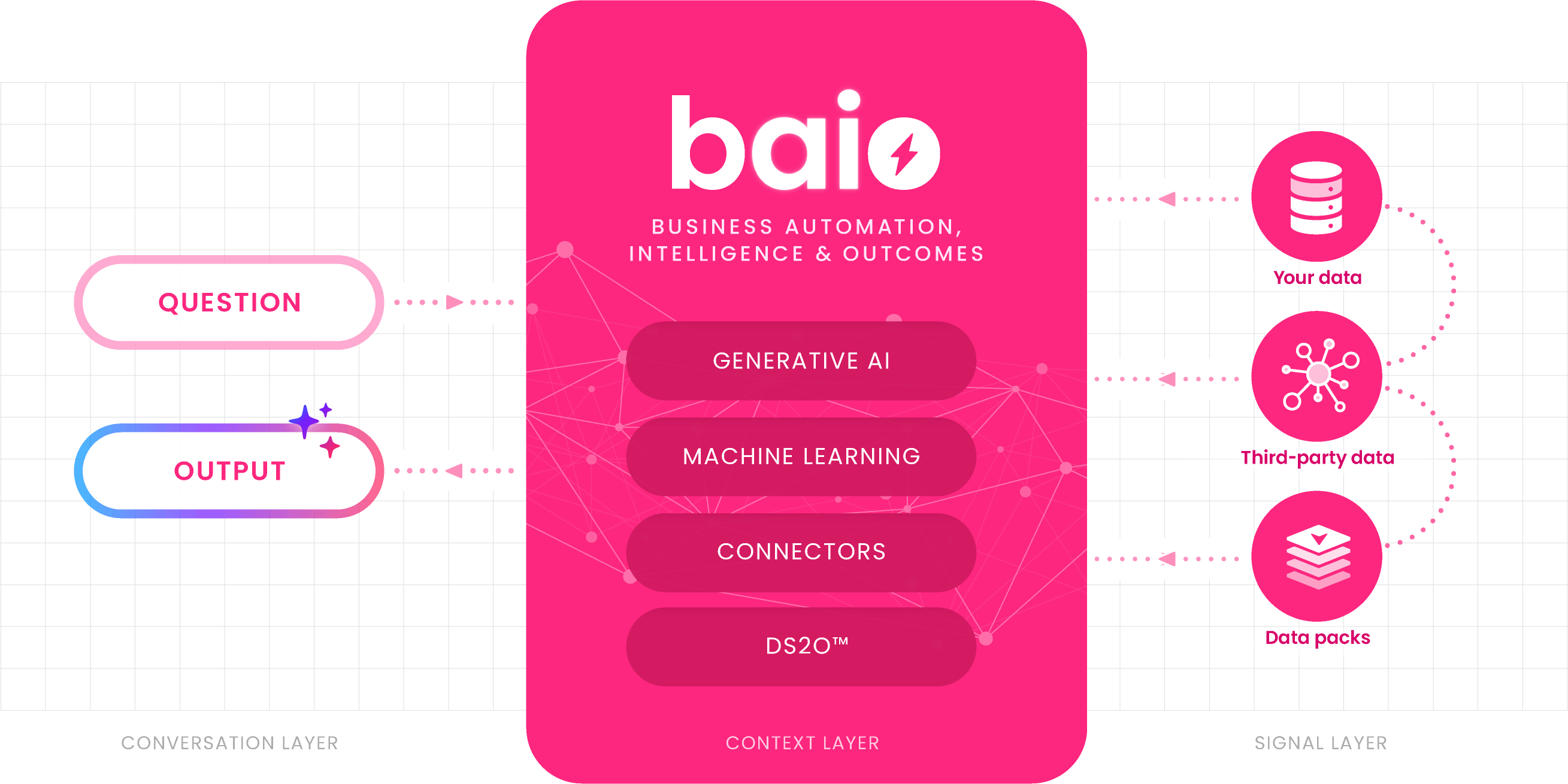
Companies are at a critical point: adopt AI or get left behind. But many feel stuck, limited by technology, skills, and a lack of data that hold them back. This is The Execution Gap—the inability to grow at the pace of AI-fueled change. To get ahead, companies need strategic AI at the core of their business. At VirtuousAI, we can help businesses close their gaps and go further faster.
Radically accelerate time to outcomes
Scale value,
not cost
Go from idea
to impact faster



More accurate

More efficient

More adaptable

More scalable

More actionable

More governable
– Who runs on BAIO –


Your comprehensive AI platform for business outcomes
What sets our stack above is our patented Data Signals to Outcomes layer, or DS2O™. This proprietary technology expertly classifies all of your data and applies contextual intelligence to each question, ensuring every query is connected to the most relevant data for the most efficient and intelligent response. Because taking strategic action relies on being connected to the full picture.

Ingest signal-rich data
Make sense of what matters
Automatically execute to hit business goals









